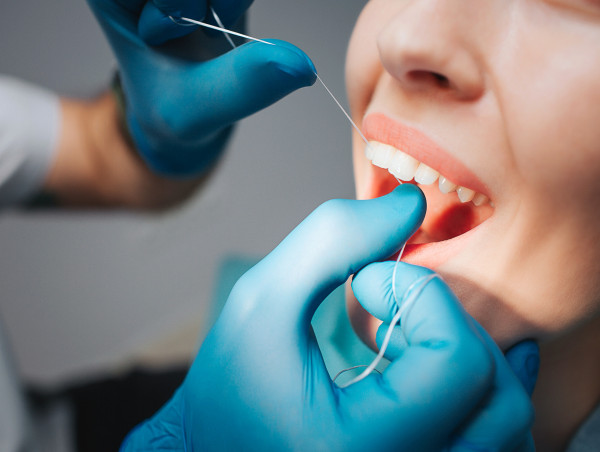Why Brushing Alone Is Not Enough
Brushing your teeth twice a day is essential for removing food particles and bacteria from the surfaces of your teeth. However, a toothbrush cannot reach the tight spaces between teeth and under the gumline. These areas are prone to plaque buildup, which can lead to tooth decay and gum disease if not properly cleaned.
Flossing is the only effective method to remove plaque and food particles from these hard-to-reach areas. Neglecting to floss allows plaque to harden into tartar, which can only be removed by a dental professional. Over time, this can lead to gingivitis, the first stage of gum disease, and if left untreated, can progress to periodontitis, a more severe form of gum disease that can result in tooth loss.
The Role of Flossing in Plaque Removal
Plaque is a sticky film of bacteria that forms on teeth and gums. When food particles and sugars are left in the mouth, they combine with plaque to produce acids that attack tooth enamel and gums. Regular flossing helps remove plaque from between teeth and below the gumline, where a toothbrush cannot reach. By doing so, flossing helps prevent the development of cavities and gum disease, contributing to overall oral health.
Dr. Ronnie Deniger explains, "Flossing is a crucial step in maintaining oral health. It effectively removes plaque from areas that brushing alone cannot reach, reducing the risk of gum disease and tooth decay."
Preventing Gum Disease Through Flossing
Gum disease, or periodontal disease, is a common condition that affects the gums and bone supporting the teeth. It begins with gingivitis, characterized by red, swollen gums that may bleed during brushing or flossing. If left untreated, gingivitis can advance to periodontitis, which can cause gums to pull away from the teeth, bone loss, and eventually tooth loss.
Flossing daily helps prevent gum disease by removing plaque from the gumline and between teeth. This simple practice disrupts the formation of bacterial colonies that cause inflammation and infection. Consistent flossing reduces the likelihood of developing gingivitis and helps maintain healthy gums.
Tips for Proper Flossing
To maximize the benefits of flossing, it is important to use the correct technique. Here are some tips on how to floss effectively:
Use Enough Floss: Start with about 18 inches of dental floss. Wind most of the floss around the middle fingers of both hands, leaving an inch or two to work with.
Hold Floss Correctly: Hold the floss tightly between the thumbs and forefingers. Gently slide it between the teeth using a back-and-forth motion.
Form a C-Shape: Curve the floss into a C-shape against one tooth and slide it gently under the gumline. Move the floss up and down, cleaning the side of the tooth.
Repeat for Each Tooth: Use a clean section of floss for each tooth. Be sure to floss both sides of each tooth, including the back of the last teeth.
Be Gentle: Avoid snapping or forcing the floss, which can harm the gums. Instead, use a gentle sawing motion to guide the floss between teeth.
Consistency is Key: Floss at least once a day. Consistent flossing helps maintain healthy gums and prevents the buildup of plaque and tartar.
Incorporating Flossing into Your Routine
For many, flossing can be an overlooked part of the oral hygiene routine. However, integrating it into daily habits is essential for optimal oral health. Setting a specific time each day for flossing, such as after brushing in the evening, can help make it a regular practice. For those who find traditional floss challenging, alternatives like floss picks or water flossers can be effective substitutes.
Conclusion
Flossing is an essential component of oral hygiene that complements brushing by reaching areas a toothbrush cannot. It plays a critical role in removing plaque, preventing gum disease, and maintaining overall oral health. Proper flossing technique and consistency are key to reaping its benefits.
Dr. Ronnie Deniger of Crossgates Dental in Slidell, Louisiana, underscores the importance of flossing in dental care. By incorporating flossing into daily routines, individuals can significantly improve their oral health and prevent common dental issues. Understanding and practicing effective flossing techniques is a vital step in achieving and maintaining a healthy smile.
Morgan Thomas
Rhino Digital, LLC
+1 504-875-5036
email us here
Visit us on social media:
Facebook
![]()




